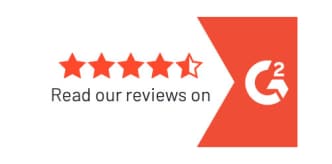If you aren’t pleased with your current 401(k) provider or haven’t shopped around in a while, it may be time to see what’s out there.
Fortunately, as technology and automation have progressed, the costs of operating a 401(k) have dropped significantly. But, not all 401(k) providers have embraced technology, so you may be paying more for your 401(k) than you have to. In addition, every 401(k) provider offers different features and plan options, so you may find your provider doesn’t offer the popular small business 401(k) features you’re hoping for.
In addition to cost and features, some other reasons to consider changing 401(k) providers are:
- Employee engagement: If your employees aren’t participating in the plan, it may be time to switch things up. Consider asking your employees for feedback about the current plan. For example, is the signup process clunky or difficult, or is the website challenging to use? Or maybe your employees would benefit from an auto-enrollment feature that your provider can’t offer?
- Investment performance: If you aren’t happy with the investment performance or investment options your 401(k) provider offers, it may be time to shop around.
- Customer and Administrative Support: Customer and administrative support vary widely by provider. Make sure you’re working with a provider that is ready and willing to answer you and your employee’s questions as needed.
If one or more of these stick out to you as a reason to change 401(k) providers, then it may be time to see what’s out there. And fortunately, a switch may not be as challenging as you think.
At a high level, switching 401(k) providers involves a hand-off between your old provider and your new provider—not a brand-new plan altogether. This is known as a 401(k) plan conversion, and the entire process can take anywhere from 2 to 3 months.
Step 1: Transfer assets from the old provider to the new provider.
Once you’ve decided to switch providers, you can start by transferring assets from the old provider to the new one.
This is known as an “asset transfer” and includes a transfer of assets and information. Your plan information will be included in the transfer and will contain critical items like participant balances, any 401(k) loan information, and other documentation. Fortunately, once you notify your old provider of the desired switch, they will be able to work with your new provider to transfer the assets and information.
The transfer process takes the most time of any of these steps. Some providers are slow to complete transfers, and notifications must be sent to employees before their funds can be moved.
One detail to consider during a switch is that your old provider may charge you a one-time termination fee as part of the offboarding process. Check with your provider for details as fee schedules vary, and be sure to weigh the costs of fees versus the possible benefits of lower ongoing fees with your new provider.
Step 2: Review and amend your plan document as needed.
Your 401(k) has a plan document containing necessary information regarding your plan’s details.
You can think of it as an instruction manual that outlines the specifics like company match, vesting schedule, employee eligibility, etc. You can review and amend your plan document with your new provider during this process. This is a chance to update things as needed and change how your 401(k) plan functions if desired. But, if cost savings are the main driver for switching providers, you may keep your plan document the same and simply restate the plan document with your new provider.
Step 3: Choose your investments.
Next, it’s time to select your investments with your new provider.
Every 401(k) provider will have access to different investment types and fund lineups. So, as part of the switching process, you will work with your new provider to select an investment lineup for you and your employees. Keep in mind a good investment lineup will contain low-cost funds that span a variety of asset classes and sectors to offer broad diversification at a low price.
In addition, if you have an automatic enrollment feature in your plan, you’ll need to select a default investment option. Typically, a Target-Date Retirement Fund based on the employee’s age is a great option.
But, if you find investments confusing and scary, do not worry—your new 401(k) provider will help you understand the basics of what to consider and ensure you have a good balance of funds to offer your employees.
Step 4: Freeze changes during the transition period.
While switching providers, you will need to freeze changes in your 401(k) plan.
This is known as a blackout period and can last as long as two months. Employees cannot change their contribution amounts or investment lineup, withdraw, or request 401(k) loans during this time. In other words, employees can’t touch their 401(k) while assets are transferred to your new provider.
401GO uses a cash conversion process to ease the transition for employees. This will allow them to create new 401GO accounts and begin contributions immediately. It will take time to move existing assets into the new accounts, and much of this process will depend on the efficiency of the old provider. Initially, accounts will only show the newest contributions, but once the transfer is complete, accounts will be updated with accurate information right away.
This can feel like a hassle for your employees, but it’s a critical step to ensure everything transfers over seamlessly and accurately to your new provider.
Step 5: Enroll your employees in the new plan.
Finally, once the transition is complete, you’ll have the opportunity to enroll your employees in the new plan.
This can be an excellent opportunity to showcase the updated features, investments, and benefits of your new 401(k) provider through a presentation or series of seminars. And fortunately, many 401(k) providers will have ready-made materials you can share with your employees about their new plan. Keep in mind there will likely be many questions about the new plan during this initial phase, but once employees get comfortable with the new provider, it should be smooth sailing.
In the end, while switching 401(k) providers can feel like a big task, it may be well worth the effort in terms of ongoing cost savings, updated features, and better technology.
We’re an alternative to your current provider.
If you’re interested in a 401(k) provider that offers low costs, great tech and support, and a thoughtful and diversified investment lineup, then 401GO is here to help. At 401GO, we provide small business 401(k) plans powered by an easy-to-use platform. Our streamlined approach allows you to get up and running in just minutes with simple and affordable pricing to fit your unique business.
You can learn more on our website or contact us for a free demo.



